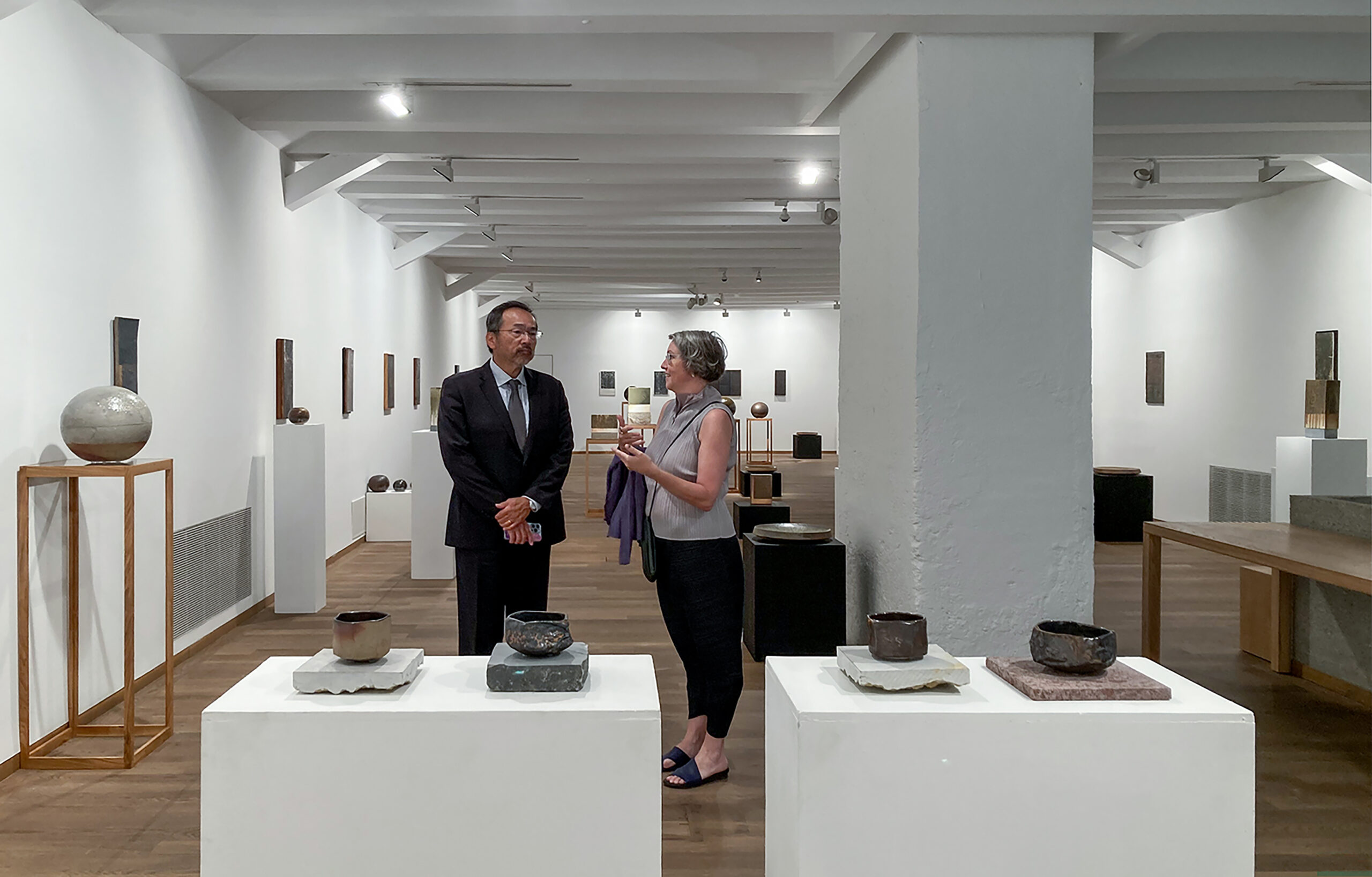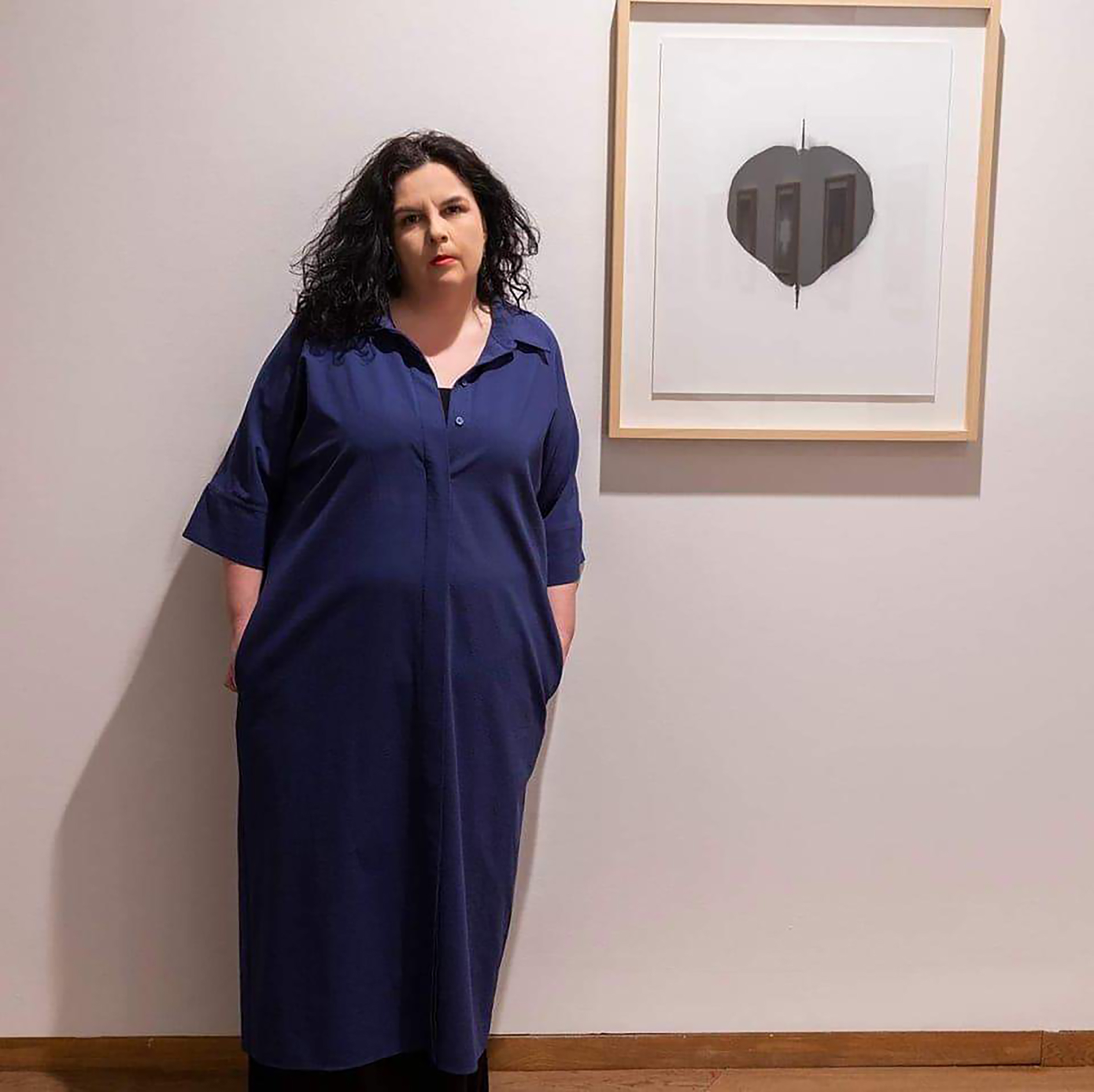Column
ColumnWays of Earth
In the tradition of Japanese ceramics, the organic connection to the land, the landscape and the natural environment is still of vital importance. It is with this perspective that the intercultural programme “Ways of Earth”, conceived and curated by Julia Néma, has initiated a creative dialogue. To launch the project, Ms Néma, with project partners geographer Barnabás Korbély and photographer Ákos Czigány, visited Japan in May 2023.
As a result of this study trip, Ms Néma selected two representatives of Mino, Rando Aso and Tetsuya Hioki, to be invited by the House of Arts Veszprém as hosting institution for the Balaton EYE artist in residency programme (AIR) in August 2023. They brought a small-scale selection of their work which was presented in a pop-up show in the House of Arts, as a joint exhibition with the major solo installation “liquid earth” of Julia Néma. As part of the AIR, all the artists participated in a 5-day long custom geotour around the Bakony-Balaton UNESCO Geopark, finding natural and cultural inspiration for their artistic activity to further elaborate the concept “Ways of Earth”.

Tetsuya Hioki, while working as a specialist of clay-making and supporting other artists in a fundamental way, finds his joy in the personal and special conversation with clay materials through his creative activity. He observes the diversity of nature compressed in each clay variety and, with his experimental approach, he unearthes the unique characteristics of matter.
Rando Aso recognises ceramic-making, which is a technè that human beings had already been using even before they started to communicate through letters, as both primordial and futuristic media for expression. He is aware that clay is a part of our earth, and therefore aims to create a work that stimulates our fundamental sense, thoughts and imagination to reconnect to nature.
“Liquid earth”, a major solo exhibition of Julia Néma in the House of Arts during the same period, worked in a synergy with the joint pop-up show of Mr Hioki and Mr Aso, in all aspects of aesthetics, visitor information, guided tours, special guest receptions and an artist talk. In her wood-fired kiln, she uses the rich geological heritage of the Lake Balaton Uplands to recreate millions of years of volcanic processes, resulting in unique colours and surfaces. Ceramic and porcelain objects, geometric sculptures and panel paintings built from the landscape reveal the beauty of nature from the deep layers. “Working in the spirit of geometric abstraction, the artist creates porcelain and stoneware objects whose fundamental forms reveal the painterly characteristics, colours and textures of glazes made from volcanic minerals, uncovering their regularities and patterns. She deliberately avoids depicting the familiar shapes and phenomena of the landscape. Her objects are simple and self-identical, made by hand in series with a personal sense of proportion.” (excerpt from exhibition text)
Based on the study trip to Japan in May 2023 we propose the following project.
Contemporary tradition
The role of tradition and heritage in Japanese ceramic art in Mino
The aim is to present the traditions of ceramic art in Mino Ceramic Valley (cities of Tajimit, Toki, Mizunami, Kani), covering a wide repertoire spanning from established masters through younger contemporaries. Highlighting these generations in parallel, the temporal perspective and the capacity for renewal of tradition, which is a unique feature of Japanese craft/art culture, will become apparent. The perception and function of tradition in Hungary and the West is different from the Japanese way, it is more questionable and fragmented. The Japanese way is much more organic. A fine comparative selection can be a novelty and exemplary for the audience attracted by the European Capitals of Culture.
The traditional styles of Mino ceramics are named after the glazes: shino, oribe, ki-seto (Yellow Seto), setoguro (Black Seto). Of these, the example of Shino ceramics is particularly interesting. Its rediscovery is attributed to Toyozo Arakawa (1894-1985, Living National Treasure), and its influence on Western ceramics is considerable. The discovery and revival of a lost tradition is a success story.
- Master Seiya Toyoba (1942) is one of Arakawa’s 3 disciples. He works in the field of tableware and tea ceramics, embracing all these styles. His exhibition “Enjoying Vessels” was recently on display at the Museum of Modern Ceramics, Gifu. (In 2018 he was certified as the holder of the Kani City Important Intangible Cultural Property “Setoguro”.)
- A younger artist, paired with the master above, might be Hiroshi Sakai (1960), a master of kairagi, the highly textured shino, who developed his own technique, indigo shino.
- An active example of the revival of a forgotten knowledge and tradition is Master Soukei Aoyama (Futao), who has been working for decades to unravel the secrets of the famous white tenmoku.
Possible co-events: workshops, tea ceremonies, public lectures.
Suggested professional partner (equipped with necessary competencies in the selection of artists and artworks): Izumi Hayashi Curator.
Possible cooperation partners in Japan: the Museum of Modern Ceramic Art, Gifu (Yasuyuki Ishizaki, Director, Hayashi Izumi Curator), its collection, and the selected artists themselves. Toyozo Arakawa Museum: senior curator Keiko Kato; Seiya Toyoba and his wife Yoshiko; Soukei (Futao) Aoyama; tea masters Numajiri Shinichi and Saiko Ebisawa etc.

Thanks to the Artists-in-Residence programme supported by the ECoC, close links have been established between Tajimi, Tokyo and Veszprém, our international profile has grown and the reputation of Veszprém has become more popular outside Europe. The successfully launched AIR project will continue in the summer of 2024 with the Bad Ischl – Salzkammergut ECoC and International Ceramics Festival Mino cooperation and planned exhibitions of new works and professional programmes and workshops in Veszprém, Vienna and Gifu.
The programme was organised in the framework of the Veszprém-Balaton European Capital of Culture 2023, in cooperation with the Gifu Museum of Modern Ceramic Art, the House of Arts Veszprém and the Bakony-Balaton UNESCO Global Geopark, with the support of the EU-Japan Fest Japan Committee.








